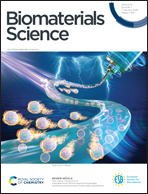Injectable smart stimuli-responsive hydrogels: pioneering advancements in biomedical applications
Abstract
Hydrogels have established their significance as prominent biomaterials within the realm of biomedical research. However, injectable hydrogels have garnered greater attention compared with their conventional counterparts due to their excellent minimally invasive nature and adaptive behavior post-injection. With the rapid advancement of emerging chemistry and deepened understanding of biological processes, contemporary injectable hydrogels have been endowed with an “intelligent” capacity to respond to various endogenous/exogenous stimuli (such as temperature, pH, light and magnetic field). This innovation has spearheaded revolutionary transformations across fields such as tissue engineering repair, controlled drug delivery, disease-responsive therapies, and beyond. In this review, we comprehensively expound upon the raw materials (including natural and synthetic materials) and injectable principles of these advanced hydrogels, concurrently providing a detailed discussion of the prevalent strategies for conferring stimulus responsiveness. Finally, we elucidate the latest applications of these injectable “smart” stimuli-responsive hydrogels in the biomedical domain, offering insights into their prospects.

- This article is part of the themed collections: Biomaterials Science Recent Review Articles, 2024 and Injectable Hydrogels


 Please wait while we load your content...
Please wait while we load your content...